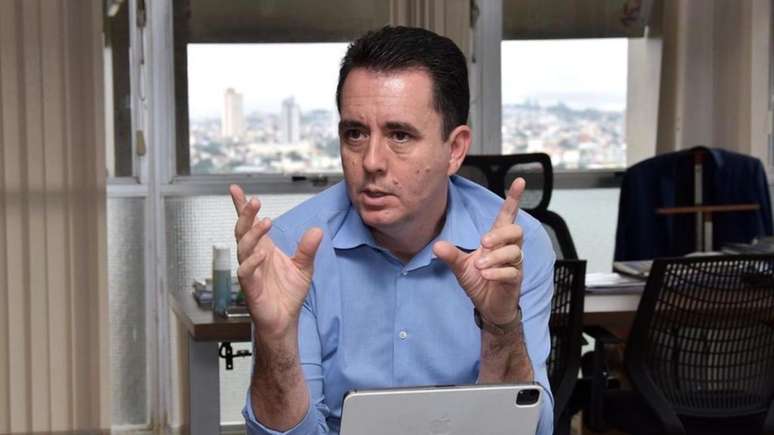Sophisticated sensor: imported solution and Brazilian reality
Murilo Huff, a dedicated father and a partner in the creation of Little Leo, resorted to a resource imported into the United States to deal with a delicate theme: the type 1 diabetes of his son, diagnosed at the age of two years after the death of Marília Mendonça.
Founded at the age of five, the disease requires constant attention and therefore in the end it became part of the boy’s electronic routine.
The sensor used by Leo, approved by his endocrinologist, is inserted directly into the skin and sends automatic readings of glucose levels in his body through a continuous system.
With this, Murilo has accurate data without having to make the traditional “chopped” on the finger, even if a manual conference of points is still required at home. This type of technology already exists in Brazil, but the values between R $ 250 and R $ 330 per sensor, with a useful life from 14 to 15 days are quite high for Brazilian families.
The justification for the import of the device is simple: quality and comfort for an active child like Leo, who was bored difficulty in managing the disease itself.
While describing his grandmother Ruth Moreira, the “leaves” sensor and prevents correct use; Hence the need for more resistant technology found in the American apparatus. The implementation of the United States was facilitated by the father, attentive to all phases of the treatment.
Nonna Ruth also stressed that in children the emotional aspect can aggravate the condition. Sensations of stress and sadness that Leo faced after losing his mother elevated cortisol or inflammatory hormones, interrupting the balance of insulin.
Therefore, the “emotional diabetes” so called does not formally exist in medicine, but the symptoms of hyperglycaemia can be triggered by psychological factors, according to the endocrinologist Lanna Gomes.
The effort to face the disease is intense: “This is one day and one night we monitor its blood sugar”, says Ruth. Playing ball, jumping, playing everything changes in hemoglobins. “When he gets excited to play, the blood sugar falls; if he is tired or sad, he gets up.”
To avoid surprises, the family maintains a firm hand: the doses of insulin are administered to each meal or in the case of hyperglycaemia and the values are regulated according to the activity and monitoring.
Also using the insulin pump for a while, Leo And the family prefers the continuous sensor because it is more comfortable. The bomb, says Ruth, has often come out and generated episodes of glucose in the low blood during the day after all, the child does not stop. Therefore, the sensor is considered the best option at the moment.
However, despite so much technology and care, adaptation is still every day. Leo, five years old, knows that he needs to pierce the finger calling the “time to make his finger” and receives insulin according to the previous counting of carbohydrates. “It already includes the process,” the grandmother reveals.
With every birthday or party, the medical and family team works in tune to guarantee safety and well -being.
Ruth makes an important warning: many families do not recognize the initial signs of the disease, which can also arise in children who often do not consume sweets. “It was always healthy, I had no sweet in everyday life, but we didn’t know type 1 diabetes. Information is needed.”
The emotional involvement, often unexpected, must be taken into consideration in the medical investigations a look that many families still ignore.
Murilo Huff: technology, love and active surveillance
In short and sophisticated monitoring coupled to family support, it has become a key actor in the control of Leo diabetes. Murilo Huff, in addition to providing important resources, collaborates with support of routines and doctors; Ruth follows every physical and emotional signal; And the Luciene nanny, who also lives with diabetes, is part of the care team.
This image absolutely requires supervision:
“High can generate serious complications in the future; the bass, until sudden death.” Therefore, also with the technological progress of Leo and the emotional adaptation, the routine is marked by the dedication and the realization of the objectives always with an affectionate aspect and a constant adjustment.
This story is a combination of technology, heart and attention to every detail: Leo can be a happy child with a track monitor and a 24 -hour team, but the disease and its emotional effects keep all on alert. And so follows: near, busy and full of affection.
Source: Terra
Earl Johnson is a music writer at Gossipify, known for his in-depth analysis and unique perspective on the industry. A graduate of USC with a degree in Music, he brings years of experience and passion to his writing. He covers the latest releases and trends, always on the lookout for the next big thing in music.





